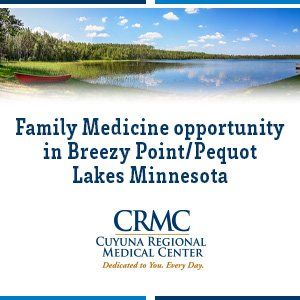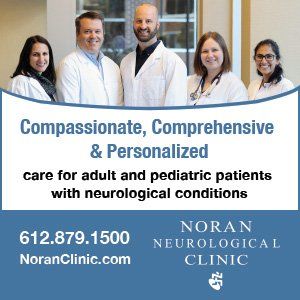espite unprecedented and exponentially expanding advances in medical science, health care status in the United States is becoming exponentially worse. After decades of declining mortality from cardiovascular disease, the Journal of the American College of Cardiology reports that in the first 18 years of the 21st century cardiovascular health declined by greater than 10% for the overall American population. Much of the decline in cardiovascular health is due to increasing rates of obesity and Type 2 diabetes. A national multi-center study suggests the number of Type 2 diabetes cases among youth in the U.S. nearly doubled between 2001 and 2017. Diabetes prevalence, showing similar trends in Minnesota, has increased over the past two decades to a record high in 2020.
cover story two
The MN 2035 Plan
Improving Public Health
By Thomas E. Kottke, MD, and Clarence Jones
Cardiovascular disease, stroke and diabetes contribute to shorter, less healthy lives for far too many people. In 2021, nearly one in two Minnesota adults were living with diabetes, coronary heart disease, heart attack, stroke, high blood pressure or high cholesterol. That same year, 8,568 Minnesotans died of cardiovascular disease, 2,384 died of stroke and another 1,575 died of diabetes. Combined, these three conditions were responsible for approximately one in every four deaths in Minnesota.
Cardiovascular disease, stroke and diabetes have big impacts on Minnesotans and Minnesota’s communities. These chronic diseases not only kill and disable but also diminish quality of life and create personal, financial and emotional stress for families. Furthermore, not everyone has the same opportunity to be healthy. Because of systemic barriers, many communities are hit harder by these conditions due to long-standing structural and social inequities, biases and barriers. For example, Native American adults, 35 to 54 years old, die of heart disease at more than three times the rate of White Minnesotans, and African American adults, 35 to 64, die of heart disease at approximately twice the rate of White Minnesotans.
Not everyone has the same opportunity to be healthy.
Creating Solutions
In response to these crises, the Minnesota Department of Health (MDH) and many partners have developed Minnesota’s Action Plan to Address Cardiovascular Disease, Stroke, and Diabetes — the “MN 2035 Plan”. Created with a wide spectrum of support and input from those most impacted, MN 2035 Plan is a road map and call to action for communities, health care organizations, organizational leaders and individuals to collaborate, prevent, treat and manage cardiovascular disease, stroke and diabetes through 2035.
More than 90 organizations and Minnesota communities most impacted by cardiovascular disease, stroke and diabetes participated in developing the action plan. Over a two-year period, workgroups provided input and ideas, one-on-one conversations took place, internal and external group listening meetings were held and surveys were conducted. During this same period, existing health data was reviewed. A leadership team comprising members from the communities, as well as health care professionals and others, was created to help guide the development of the MN 2035 Plan.
Setting Goals
The MN 2035 Plan has three overall goals to improve disease prevention, management and treatment:
- Eliminate racial, geographic and other health inequities that lead to higher rates of cardiovascular disease, stroke and diabetes for certain populations in Minnesota.
- Remove barriers to good health and well-being.
- Increase access to affordable and culturally appropriate prevention strategies, clinical services, and self-management options for those who have, or are at risk of experiencing, heart disease, stroke and diabetes.
To meet these goals, the MN 2035 Plan focuses on the communities experiencing the worst health outcomes and lays out detailed strategies and example actions. The expectation is that when implemented at institutional, local, regional, state and tribal levels, it will save lives, reduce health disparities and improve health and well-being.
MN Plan 2035 is in the early stages and is drawing from the experience of many existing initiatives to improve the health status of those suffering from chronic disease. These efforts can come from large statewide MDH-led projects to those organized at a church or local barbershop level. From arthritis, to Alzheimer’s, to nutrition to smoking cessation, and many others, there are outstanding ongoing efforts to provide support for those in need. Unlike previous plans, the MN 2035 Plan combines cardiovascular disease and diabetes into a single action plan. This organization will expand to benefit all chronic diseases and provide an opportunity to align efforts with community priorities mobilizing action for the greatest health status improvements.
The MN 2035 Plan consists of 10 priority outcomes focused on prevention, disease management and acute treatment. Each priority is accompanied by a series of strategies designed to help achieve those outcomes. An interactive website, health.state.mn.us/2035plan, has been created to help with the implementation of the MN 2035 Plan as well to create awareness around strategies that include video success stories from organizations and tribes around Minnesota that are successfully implementing components of the MN 2035 Plan. The website also provides example actions that the medical community can implement to help reach the three overall goals.
Physician Engagement
Physician engagement is important if the plan is to succeed. For example, every physician can promote cardiovascular health at three levels. The first is caring for their own personal health. The second is focusing on clinical treatments that promote both patient risk prevention and treatment. The third involves community participation through the creation of programs, systems, policies and environments that promote healthy lifestyles.
Personal Health Physicians will maintain their own personal health by following the American Heart Association’s “Life’s Essential 8”: eating better, being more active, not using tobacco, getting healthy sleep, managing weight, controlling cholesterol, managing blood sugar and managing blood pressure. After all, there is nothing intrinsic in doctoring that negates the potential harms of risky behaviors and untreated cardiovascular risk factors. Caring for one’s personal health with health-promoting behaviors also provides a model of goal behaviors for patients and members of the physician’s social network.
Clinical Treatments Although hyperlipidemia control has improved in the last 25 years, likely due to the more frequent use of statins, the news is not good for hypertension control. Hypertension control is particularly poor among young adults overall, with some communities — Southeast Asian, Black, Somali, and others — performing especially poorly. Haitham Hussein, at the University of Minnesota, has documented in a population he studied that in all races except Somali, the rate of uncontrolled hypertension was highest in the 18-29 age group and decreased progressively with increasing age until it increased again in at age 70 and older. Some of the worsening of pregnancy and birth outcomes for Blacks is undoubtedly due to inadequate blood pressure control, leading to pre-eclampsia. Engaging culturally diverse patient populations with understanding, community-informed messages and strengths-based solutions is a critical step toward increasing trust and improving patient outcomes. Concurrent with adhering to Life’s Essential 8 for themselves, clinicians can reduce the development of risk factors in their patients by promoting Life’s Essential 8 for everyone.
Every physician can promote cardiovascular health.
Community Participation The Community Preventive Services Task Force (CPSTF) was established by the U.S. Department of Health and Human Services (DHHS) in 1996. Its mission is to develop guidance on which community-based health promotion and disease prevention intervention approaches work and which do not work, based on available scientific evidence. For example, it recommends self-measured blood pressure monitoring interventions combined with additional support to improve blood pressure outcomes in patients with high blood pressure. The CPSTF found that team-based care, reducing medication costs and engaging community health workers in a team-based care model results in even better blood pressure control. It concluded that the same applies to cholesterol control and that engaging community health workers for health education and as outreach, enrollment and information agents to increase self-reported health behaviors such as physical activity, healthy eating habits and smoking cessation is both effective and cost-effective in patients at increased risk for CVD.
The trends are clear, societal changes are driving growing obesity rates and lifestyle-related chronic diseases, shortening both the quality and length of lives. Although the solutions are largely to be found outside the clinic walls, physicians can play a key role in promoting disease prevention with policy and community initiatives. They can work with communities to advocate for change to ensure healthy choices are available to everyone, and social drivers of health, such as lack of housing, food insecurity and opportunities for physical activity are addressed. All physicians have multiple opportunities to improve cardiovascular health in their communities. Most convenient is to start with their own clinic and the hospitals they use. Physicians can assure that both patients and staff have access to health-promoting foods and beverages. In community schools, they can make sure that students, teachers and other staff are served and have access to these foods. Athletic events and school fundraisers should not be ignored as opportunities to provide health-promoting nutrition. Breaks for physical activity during the school day promote both health and learning. Evidence of the effectiveness of these interventions, and all CPSTF findings, can be found at thecommunityguide.org
Partnership Examples
For physicians who are seeking to engage in the broader community, programs affiliated with the Hue-Man Partnership are good models for replication. For example, Dr. LaPrincess Brewer at the Mayo Clinic has organized FAITH (Fostering African Americans in Total Health). Dr. Brewer’s program is a community-based participatory research partnership between Mayo Clinic Rochester and African-American church congregations with a goal of fostering healthy lifestyle choices, improving heart health and addressing the social determinants of health. The behavioral goals are the American Heart Association Life’s Essential 8 framework. Dr. Brewer is currently developing and testing the feasibility and acceptability of a culturally appropriate, risk-based digital application that is intended to help African Americans maintain healthy lifestyles and manage their risk factors.
Another program example is that of Dr. Stuart Grande at the University of Minnesota. Dr. Grande is working with communities to educate and improve ways to support Black men with Type 2 diabetes by using focus groups and community activities.
Dr. Nilofar Hadidi, also at the University of Minnesota, has organized Healthy Engaged Lifestyles to Prevent Stroke (HELPS). HELPS first phase surveyed the Black community to understand their perception of stroke. HELPS Phase 2 trained community champions to provide education about stroke risk factors and lifestyle changes to reduce Black Americans’ risk of stroke.
Another example involved a health system and the Hmong American Farmer’s Association, which partnered to address food insecurity and connect patients to fresh, culturally relevant produce through a Veggie Rx program. This initiative allowed individuals with limited capacity to follow dietary recommendations to receive food prescriptions and measurably improve blood sugar control. The video story link is https://youtu.be/BIAjDltt8i8
Engineering Success
In Finland, when heads and hearts were put to the task of preventing heart disease, stroke and diabetes, they had great success. Minnesota can do the same. The Finnish initiative started in 1972 with the North Karelia Project. Following this comprehensive program of risk factor prevention, risk factor treatment, intensified treatment of acute events and cardiac rehabilitation, myocardial infarction rates declined by 85%, the total mortality rate declined by 50%, and healthy life expectancy in middle age increased by 10 years. In the 1970s, when the North Karelia Project began, per capita income in Finland was about half that of the United States, and North Karelia was one of the poorest regions of Finland. Robust national health care services help keep the Finns healthy.
Our task today is more challenging for many reasons. For example, we must employ culturally competent health care across several distinctly different demographics and do not have a national mandate or national funding to achieve our goals. Prevention of heart disease, stroke and diabetes, however, is primarily about will, not money. If we put our heads and hearts into the MN 2035 plan, and there is leadership at all levels, there is no reason we can’t have the same success as Finland.
The MN 2035 Plan was created by bringing together individuals with a wide variety of perspectives, experiences, roles and knowledge of cardiovascular disease, stroke and diabetes. Its success will depend on all of those same individuals, and others, working in a collaborative, community-integrated effort. There is room for every Minnesotan to help implement the MN 2035 Plan, from communities across the state, to health care professionals, to business leaders, and even to those with just an interest in heart disease, stroke and diabetes. Its success depends on champions like you working together to help implement the plan’s strategies. Contact health.MN2035Plan@state.mn.us to join the online community forum and connect with others to find resources, take advantage of opportunities and gain insight from success stories as you work to prevent heart disease, diabetes and stroke.
Thomas Kottke, MD, is medical director for well-being at HealthPartners. He has been working to prevent heart disease and stroke since the time he was a medical student.
Clarence Jones, is the executive director of the Hue-MAN Partnership and an adjunct instructor of medicine for the Mayo Clinic.
MORE STORIES IN THIS ISSUE
cover story one
A Crisis in Home Health Direct Care: The Minnesota Solutions Model
By Jesse Bethke Gomez, MMA
cover story two
The MN 2035 Plan: Improving Public Health
By Thomas E. Kottke, MD, and Clarence Jones




















